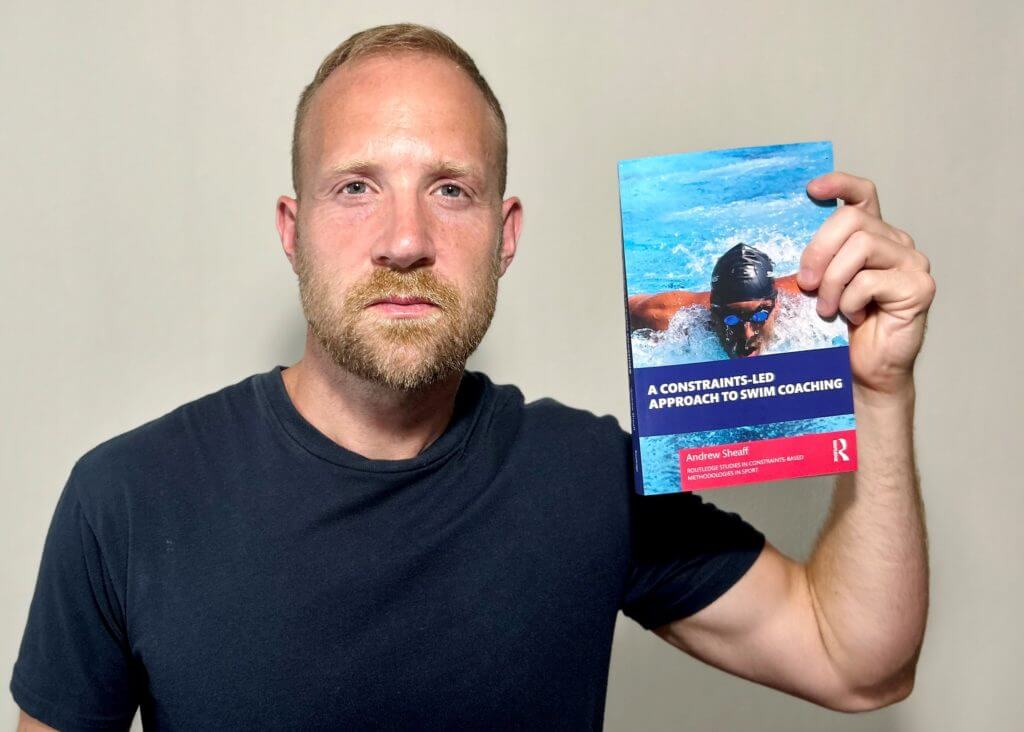Andrew Sheaff Releases ‘A Constraints-Led Approach to Swim Coaching’

Andrew Sheaff has been around the sport of swimming for decades. He has worked with some of the best swimmers in the world, and experienced first-hand how difficult it is to continue to improve for swimmers at the top of the sport.
So he has been in a constant battle to find out what gets results.
Sheaff, an assistant coach at three-time NCAA champion Virginia, put his findings into a book to help others in the sport find new ways to build success. The book is titled “A Constraints-Led Approach to Swim Coaching.”
“I have coached in the NCAA system for 16 years and did some work as a strength and conditioning coach before that. I am very much interested in finding better ways to accomplish a given result. I am convinced that faster swimmers are better swimmers, and skill development is the primary driver of swimming performance,” Andrew Sheaff told Swimming World. “As a result, I have been focused on identifying and developing strategies that consistently and reliably help swimmers learn the skills that enable them to swim fast.”
Sometimes, that means going against the norm.
“The traditional approach of performing some isolated drills at the beginning of the season or the beginning of a workout, and then ‘thinking about your technique’ during training sets, is ineffective on many levels,” Andrew Sheaff said. “In contrast, I believe that designing tasks that help swimmers learn the key skills while they train is the more effective approach, AND it allows for simultaneous development of the physical fitness that is also critical for success.
“Just like a training plan is critical for success, I believe there needs to be a plan for skill development to ensure that it happens, and these two plans must co-exist.”
Enter constraints.
“How swimmers swim is influenced by many modifiable factors. A constraint is anything that influences how a swimmer moves through the water. They can take the form of task constraints, individual constraints, or environmental constraints. The concept is best understood through examples. Swimmers will swim very differently during a 50-m race versus a 1500-m race, both examples of task constraints. Likewise, having swimmers place a paddle on their head, and trying to keep it in place, as they swim is a task constraint.
Constraints also exist within individuals. Different swimmers are of different heights, have different strength lengths, and different mobility, and they swim differently as a result. Janet Evans and Ian Thorpe both were Olympic Champions in the same event despite having different physiques. Fatigue also acts as an individual constraint. As every coach and swimmer knows, skills changes during the last quarter of any race!
Lastly, while not as important in competitive swimming, the environment can constraint movement as well. Short-course versus long-course swimming is a great example here, as swimmers will move differently based upon the pool length they race in. The key idea is that when coaches understand how different constraints influence how swimmers swim, they can then manipulate those constraints to help swimmers learn the skills that lead to fast swimming.”
The book details the process from identifying things to change, adding constraints and putting it all together.
More information and orders of Andrew Sheaff’s book here.



